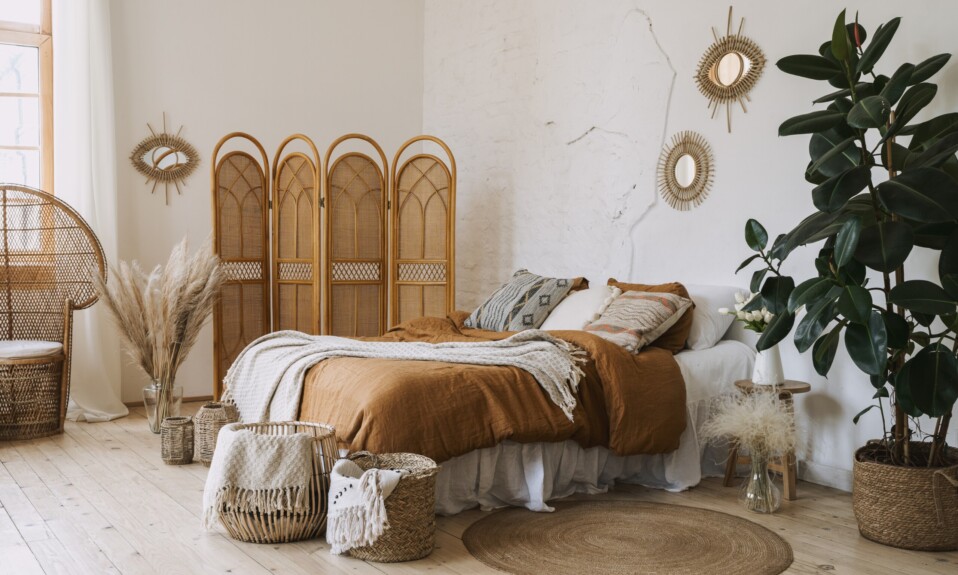
Interior Design Styles
Share
Types of Interior Design Styles
Traditional and Transitional Styles
Traditional design offers a timeless appeal, think rich fabrics, warm woods and classic furniture with intricate details. This style pairs beautifully with symmetrical layouts and architectural elements like crown mouldings and wainscoting.

Transitional adds a more modern twist, seamlessly blending traditional elements with contemporary touches to create a sophisticated and balanced space. Use this style to incorporate statement pieces alongside timeless furniture. It is a good option for those who want a timeless look with a modern twist.

Contemporary
This style is all about clean lines, sleek aesthetics and functionality. It features neutral colour palettes, uncluttered spaces and furniture with sharp lines.The difference between contemporary and minimalist is that the former allows for a touch more personality with pops of colour or statement art pieces.
Minimalist Interior Design
Minimalist interior design is a popular style that focuses on simplicity, clean lines and functionality. The aim of this design style is to create a sense of calm and peace by using a limited number of elements and focusing on the bare essential details. It uses a limited colour palette of neutral colours such as white, black, grey and beige which creates a sense of spaciousness and calm. It also uses natural materials like wood, stone and wool to add warmth and texture to the space, while also reflecting the connection to nature. Natural light is preferred, therefore, it is important to incorporate large windows and skylights. Artificial lighting is strategically used.

Mid-century Modern
This style is inspired by the design of the 1950s Think organic shapes, bold colours and iconic furniture pieces like Eames chairs and Saarinen tulips. This style is all about functionality and a playful touch.

Rustic
For a more down to earth feel, rustic design is a good choice. This style embraces natural materials like wood and stone, creating a cosy and inviting atmosphere. It often features exposed beams, woven textures and warm earthy tones.

Eclectic/Maximalism Decor
Don't want to be confined to a single style? Eclectic design\maximalist home decor is your answer! This style celebrates individuality and encourages you to mix and match different aesthetics to create a space that is personal and uniquely you. It allows you to express your individuality through bold patterns, vintage finds, upcycling and unexpected combinations to express your personality.

Bohemian
This style exudes a relaxed and free-spirited vibe. Think flowy fabrics, global inspired textiles and an abundance of plants. This style is all about creating a comfortable and inviting space that reflects your wanderlust and artistic spirit.

Coastal
This style brings the beachy feel indoors with light and airy colours, natural textures like linen, seagrass and nautical elements.

French Country
:max_bytes(150000):strip_icc():format(webp)/SPR-basics-of-french-country-decorating-452503-hero-650ebed0c8ba4fc8b08aeef80f184e11.jpg)
Industrial
This style is inspired by old factories and warehouses. It features exposed brick, metal accents and vintage industrial furniture.

Scandinavian Interior Design
Scandinavian interior design, also known as Nordic design, is a popular style that originated in the Nordic countries of Denmark, Sweden, Norway, Finland and Iceland. It is known for its simplicity, functionality and use of light and natural materials. It often features white walls, light wood furniture and clean lines. Scandinavian design is a versatile style that can be adapted to any space. It is a good choice for those who want to create a home that is both stylish and functional.

Japandi
This style is a blend of Japanese and Scandinavian aesthetics. It emphasises minimalism, natural materials and functionality.

Art Deco Interior Design
Art Deco interior design is a luxurious and glamorous style that emerged in the 1920s and 1930s. It incorporates geometric shapes such as chevrons, zigzags, sunbursts, and trapezoids, bold colours palettes that are often bold and contrasting, featuring blacks, whites, golds, silvers and jewel tones like emerald, sapphire, and ruby, luxurious materials such as marble, chrome, glass, brass and exotic woods like ebony and rosewood, symmetrical layouts, which contribute to the feeling of order and sophistication and mirrors as they help to reflect light and create a sense of spaciousness.

Farmhouse Design
This style is inspired by traditional farmhouses. It features rustic elements like shiplap walls, exposed beams and vintage furniture. Modern farmhouse design on the other hand is a popular blend of traditional farmhouse aesthetics with contemporary elements resulting in a warm, inviting and stylish space. It captures the essence of a cosy countryside retreat while incorporating modern touches for functionality and a clean aesthetic.

Hollywood Regency
This style is all about glamour and luxury. It features bold colours, metallic accents and Art Deco-inspired furniture.

Southwestern

Mediterranean
This style is inspired by the countries bordering the Mediterranean Sea. It features warm colours, terracotta tiles and wrought iron accents.

Happy decorating! x
